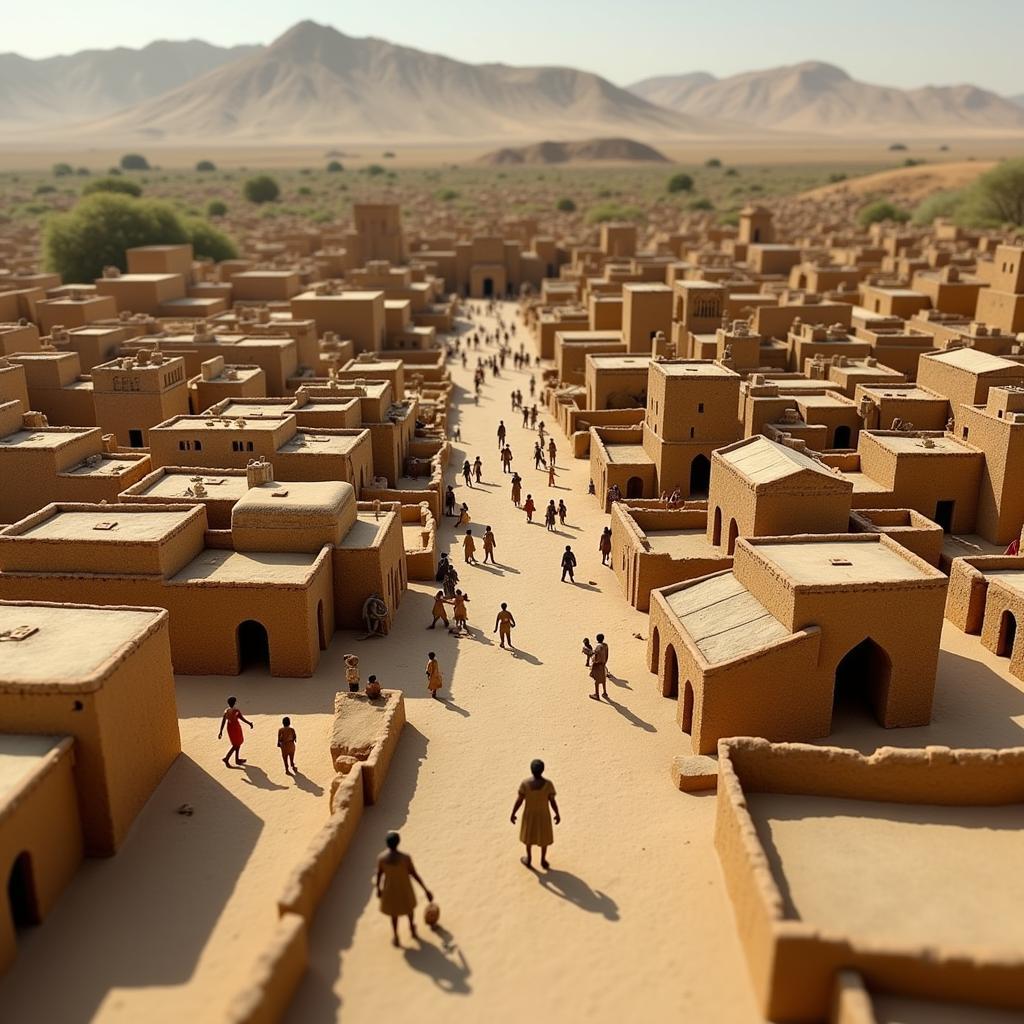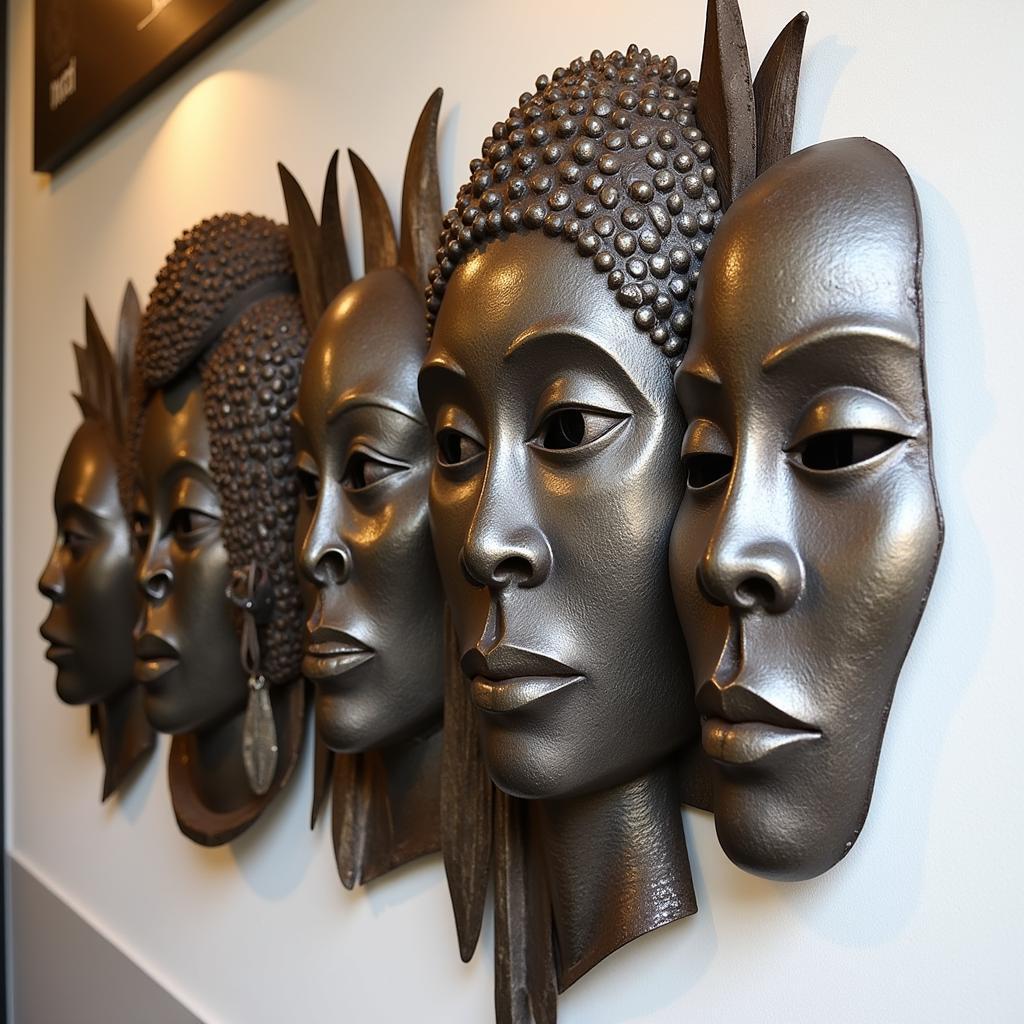Exploring African Culture Through 3D Models
African Culture 3d Models offer a fascinating and interactive way to delve into the rich heritage of the continent. From ancient artifacts to contemporary art, these digital representations provide access to a vast array of cultural expressions. Let’s explore how 3D modeling is bridging the gap between the past and the present, making African culture more accessible than ever.
After a brief overview of the importance of preserving and sharing cultural heritage, we’ll delve into specific examples of 3D models and their significance. African hut 3d model designs are a prime example of this digital preservation. We will also discuss the impact of technology on cultural preservation and the exciting possibilities it holds for the future.
The Power of 3D Models in Preserving African Cultural Heritage
3D modeling offers a powerful tool for preserving delicate artifacts that might otherwise be lost to time or damage. By creating accurate digital replicas, museums and researchers can ensure these invaluable pieces of history remain accessible for generations to come. This is particularly crucial for African cultural heritage, which is often underrepresented in digital spaces.
Furthermore, 3D models can be shared globally, allowing people from all corners of the world to experience and learn about African cultures. This democratization of access is invaluable for promoting understanding and appreciation of the diversity and richness of African heritage.
Showcasing the Diversity of African Art and Architecture
From intricate masks and sculptures to elaborate architectural designs, African culture is brimming with artistic expression. 3D models allow us to examine these creations in detail, appreciating the craftsmanship and symbolism embedded within them. They also offer a unique opportunity to interact with these objects, rotating them, zooming in, and gaining a deeper understanding of their form and function.
African Culture 3D Model: Bridging the Gap Between Past and Present
3D models are not just limited to preserving the past; they also play a vital role in showcasing contemporary African art and design. By creating digital representations of modern sculptures, installations, and architectural projects, artists and designers can reach wider audiences and share their creative visions with the world.
The intersection of traditional and modern is another fascinating aspect of using 3D models to explore African culture. Artists are using this technology to reimagine traditional motifs and techniques, creating innovative works that bridge the gap between the past and present. 3d character african man model sheet embodies this fusion, showcasing the potential of 3D modeling in character design inspired by African culture.
How 3D Models Enhance Education and Research
In educational settings, 3D models can bring African culture to life, making learning more engaging and immersive. Students can interact with virtual artifacts, explore ancient ruins, and even “walk through” traditional villages, gaining a deeper understanding of the history, customs, and traditions of different African communities. For example, african cartoon music video can be used as an engaging educational tool to introduce younger audiences to African music and storytelling.
 3D Reconstruction of an Ancient African City
3D Reconstruction of an Ancient African City
The Future of African Culture in the Digital Age
As technology continues to evolve, the potential for 3D models to enhance our understanding of African culture is limitless. From virtual reality experiences that immerse us in ancient rituals to augmented reality apps that overlay digital information onto real-world objects, the possibilities are vast. African architecture news provides insights into contemporary architectural projects that can be visualized and further explored through 3D modeling. African dolls newspaper crafts samurai 3d demonstrates the creative potential of 3D art forms inspired by African culture.
Professor Abimbola Adebayo, a renowned expert in African art history, states, “3D modeling is not just about creating digital replicas; it’s about breathing new life into cultural heritage and making it accessible to everyone.”
Conclusion
African culture 3D models offer a powerful tool for preserving, sharing, and celebrating the rich heritage of the continent. From ancient artifacts to contemporary art, these digital representations are revolutionizing the way we experience and interact with African culture. As technology continues to advance, we can expect even more innovative and engaging ways to explore the beauty and diversity of African cultures through 3D models.
FAQ
- What are the benefits of using 3D models for preserving African cultural heritage?
- How can 3D models enhance education about African culture?
- What are some examples of contemporary African art and architecture being represented through 3D models?
- How can 3D modeling be used to bridge the gap between traditional and modern African art?
- What is the future potential of 3D models in showcasing African culture?
- How can I access and interact with African culture 3D models online?
- Are there any ethical considerations regarding the creation and use of 3D models of African cultural artifacts?
Dr. Chinua Achebe, a leading anthropologist specializing in African cultures, emphasizes, “The digital preservation of African heritage through 3D models is crucial for ensuring its accessibility and safeguarding it for future generations.”
Aisha Muhammed, a prominent digital artist working with African themes, adds, “3D modeling allows me to express my cultural heritage in new and exciting ways, reaching a global audience and sharing the beauty of African art with the world.”
Need more support? Contact us: Phone: +255768904061, Email: [email protected] or visit us at: Mbarali DC Mawindi, Kangaga, Tanzania. We have a 24/7 customer service team.


